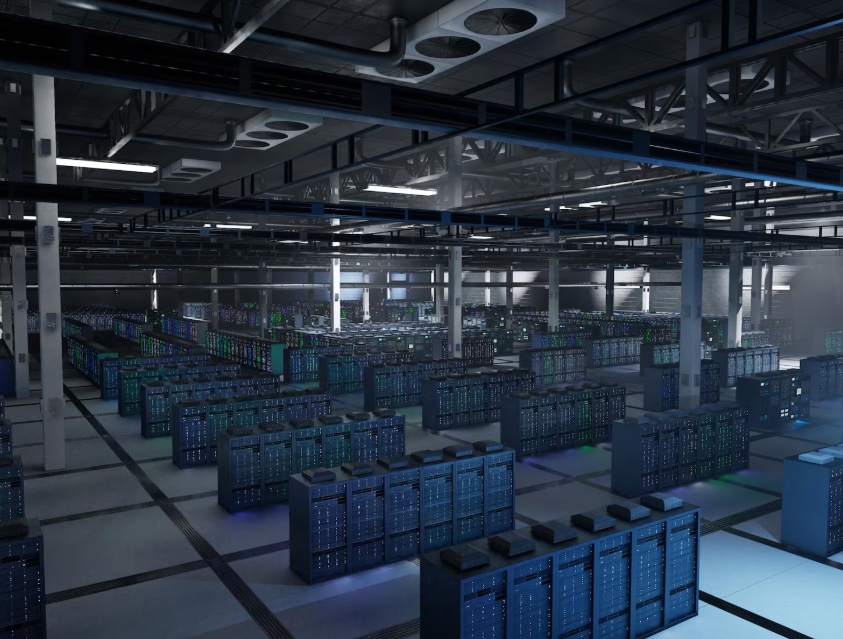In the dynamic realm of data centers, the critical confluence of cooling efficiency and sustainability has spurred the emergence of innovative solutions. Among these, Cooling as a Service (CaaS) stands out as a remarkable trend. Find out how data center cooling shifts to a greener solution.
Table of Contents
The Challenge of Cooling Data Centers
Data centers are the bedrock of the digital age, humming with ceaseless activity. However, this omnipresent vitality brings forth a formidable challenge: temperature regulation. The heat generated by servers and equipment demands substantial cooling solutions, both economically and ecologically.
Traditional Cooling Methods
Air Conditioning
Traditionally, data centers have relied on power-hungry air conditioning systems to maintain a cool environment. While effective, this approach consumes substantial energy and has a notable carbon footprint.
Liquid Cooling
Liquid cooling, which involves circulating chilled fluids through the data center infrastructure, is another conventional method. While it can be more energy-efficient than air conditioning, its implementation can be complex and costly.
The Rise of Cooling as a Service (CaaS)
What is CaaS?
Cooling as a Service (CaaS) is a groundbreaking paradigm shift in data center cooling. It leverages a service-based model that focuses on energy-efficient cooling solutions as a comprehensive package, encompassing not only the equipment but also ongoing maintenance and optimization.
Key Features of CaaS
CaaS providers employ advanced technologies, such as predictive analytics and AI, to optimize cooling systems. This results in energy savings, reduced operational costs, and a substantially diminished carbon footprint.
Understanding Chilled Water System in CaaS
A Chilled Water System plays a crucial role in CaaS. Essentially, it involves the use of water that has been significantly cooled, which is then circulated throughout the data center. The chilled water absorbs the heat generated by the equipment, effectively reducing the ambient temperature as a data center cooling system. The heated water then returns to a central cooling device, where it is cooled once more before being circulated again. This continuous cycle ensures optimal and efficient cooling. As part of a CaaS package, the installation, maintenance, and optimization of this chilled water system is taken care of by the service provider, thereby ensuring not only efficient cooling but also a reduction in maintenance and servicing hassles for the data center operator.
The Environmental Benefits
Energy Efficiency
CaaS prioritizes energy efficiency by precisely calibrating cooling systems to match real-time demands. This leads to substantial reductions in energy consumption, translating to lower utility bills and a reduced environmental impact.
Carbon Footprint Reduction
The holistic approach of CaaS doesn’t stop at energy savings. By utilizing sustainable refrigerants and innovative design, it effectively curbs carbon emissions, contributing to a greener data center ecosystem.
Cost Savings
Operational Expenditure
CaaS is not only a boon for the environment but also for the pocket. By outsourcing cooling services, data center operators can significantly lower their operational costs as the burden of maintenance and upgrades is shifted to the service provider.
Scalability
CaaS offers scalability on-demand, allowing data center operators to adapt to changing requirements without significant upfront capital investment. This flexibility translates into a competitive advantage in a dynamic digital landscape.
In the face of evolving data center needs and increasing environmental concerns, Cooling as a Service (CaaS) emerges as a game-changer. This innovative approach offers a trifecta of benefits – energy efficiency, carbon footprint reduction, and cost savings, all of which are crucial in today’s digital and eco-conscious landscape. By integrating advanced technologies with a service-based model, CaaS not only ensures optimal cooling but also reduces the operational burden on data center operators. As the digital age continues to expand, the significance of adopting such sustainable and economically viable solutions will only become more pronounced. The way forward lies in embracing these green alternatives, thereby cultivating a sustainable future for our digital world.










